
SEDIMENTOLOGY AND CORE ANALYSIS LAB
Information on the service
The main activities of the laboratory are the grain size analyzes of sediment, followed by washing of sediment for subsequent micropaleontological observations. The laboratory is developed in three adjacent rooms, one of which is dedicated to the opening and sampling of geological cores. The access to the laboratory is possible after being registered in the lists of attending people. The laboratory services are offered for educational (bachelor and master students, PhD students, students carrying out training activities and internships, carrying out exercises to support courses), and for research purposes (research fellows, researchers, professors and affiliated C.N.R. staff). The laboratory also offers activity, regulated by a tariff, for the external operator; the regulation of this activity and the relative tariffs are being defined and revised.
Booking
Please contact the responsible of the laboratory.
Devices
The laboratory is equipped with an Endecotts and two Fritsch sieve shakers and numerous stacks of sieves test, to carry out in dry way grain size analyzes on sands and gravels (sieving); the sedimentary fractions smaller than sand are analyzed in wet way by a Sympatec laser granulometer. For the preliminary preparation of the samples, there are two manual sample dividers to be used in dry way, two automatic sample dividers (Retsch and Fritsch) that can be used both in dry and wet way and seven Ika immersion stirrers to stir the samples dispersed in water, when necessary. The laboratory instrumentation is completed by two Sartorius analytical balances, several sedimentation cylinders and a ventilated oven thermostated at 40 °C for drying the samples.
Application fields
- Sedimentology, Volcanology, Geomorphology, Cultural Heritage, Environmental Analysis, Forensic Sciences: grain size analysis and statistical elaboration;
- Paleontology and Micropaleontology: preparation of washed samples for subsequent paleontological and micropaleontological observations and characterizations;
- Mineralogy: selection and isolation of definite class grain size fractions (using the sedimentation cylinders).
Pictures from Laboratory tests
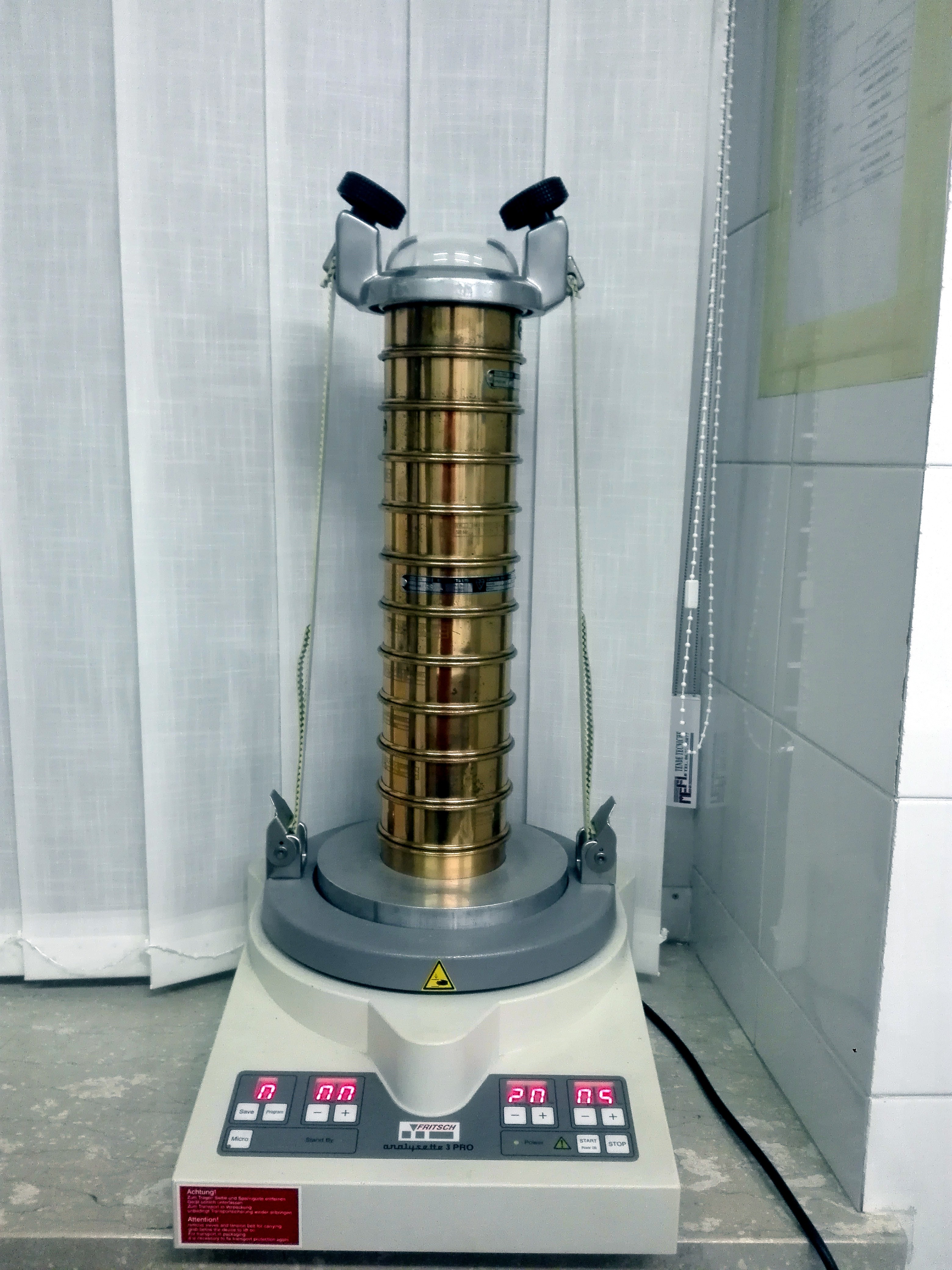 Sieve shaker: Fritsch shaker with stack of sieves for sand and gravel sediment classes. |
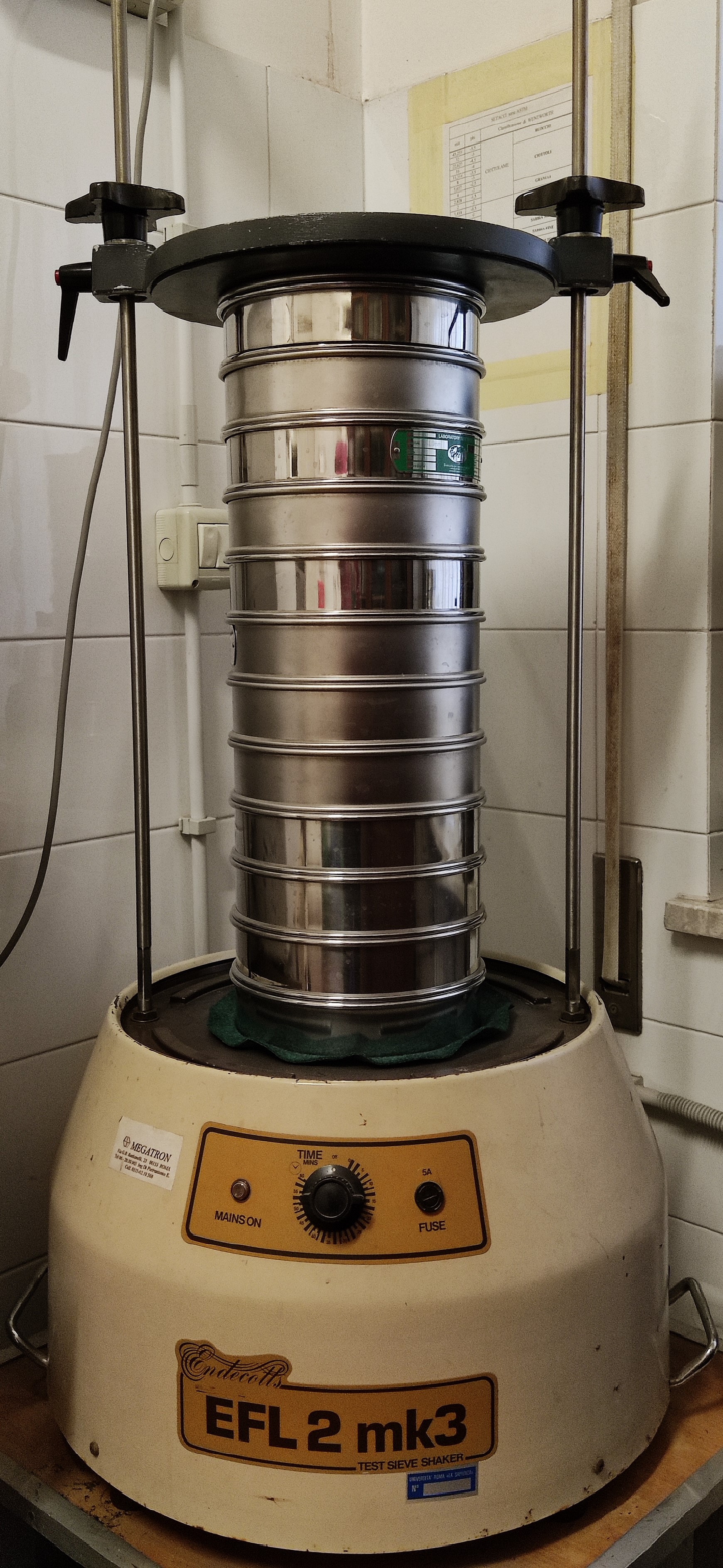 Sieve shaker: Endecotts shaker with stack of sieves for sieving sands and gravels. |
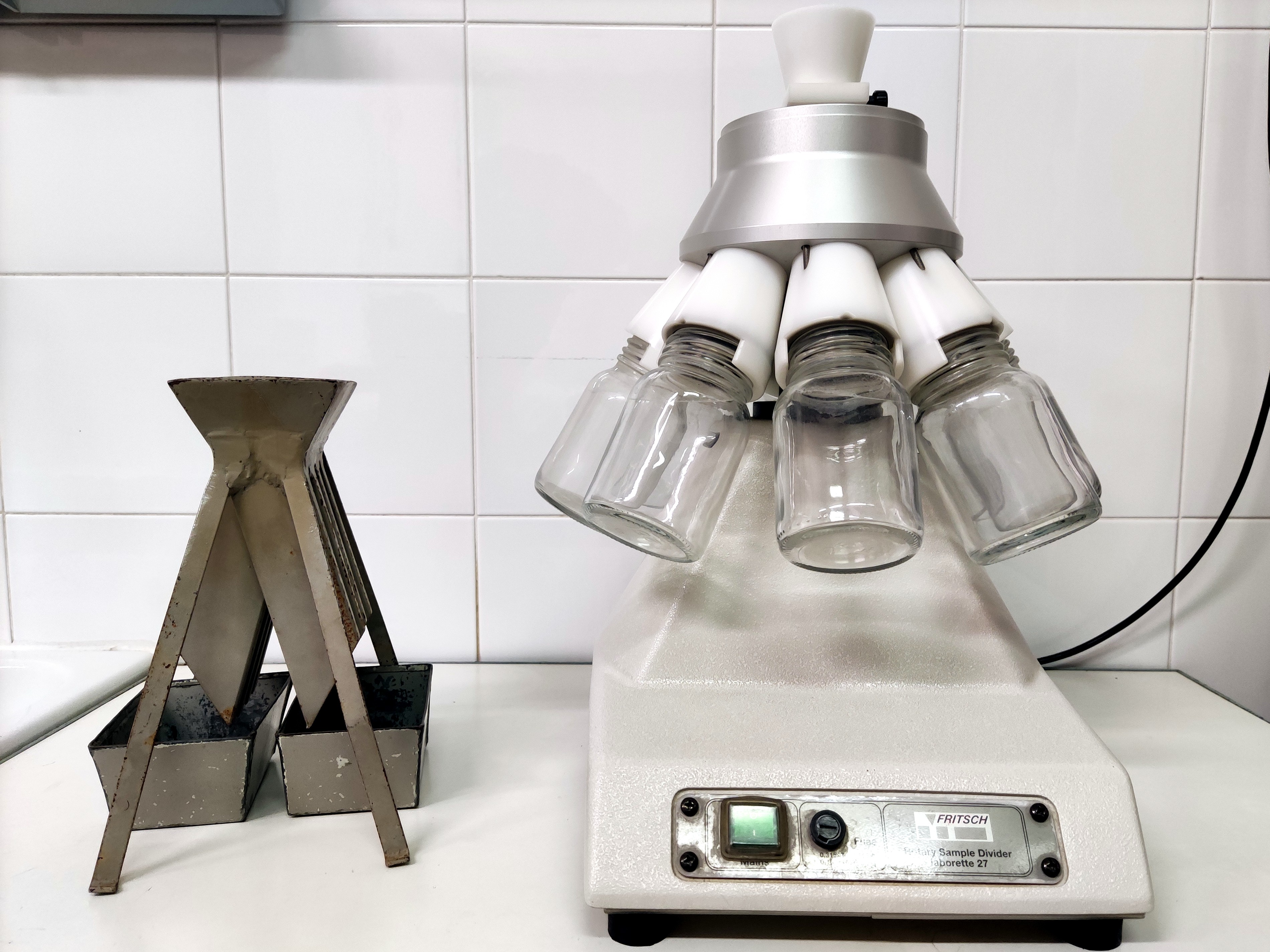 Sample divider: manual sample divider to be used dry (on the left) and automatic sample divider usable both in dry or in wet way (on the right). |
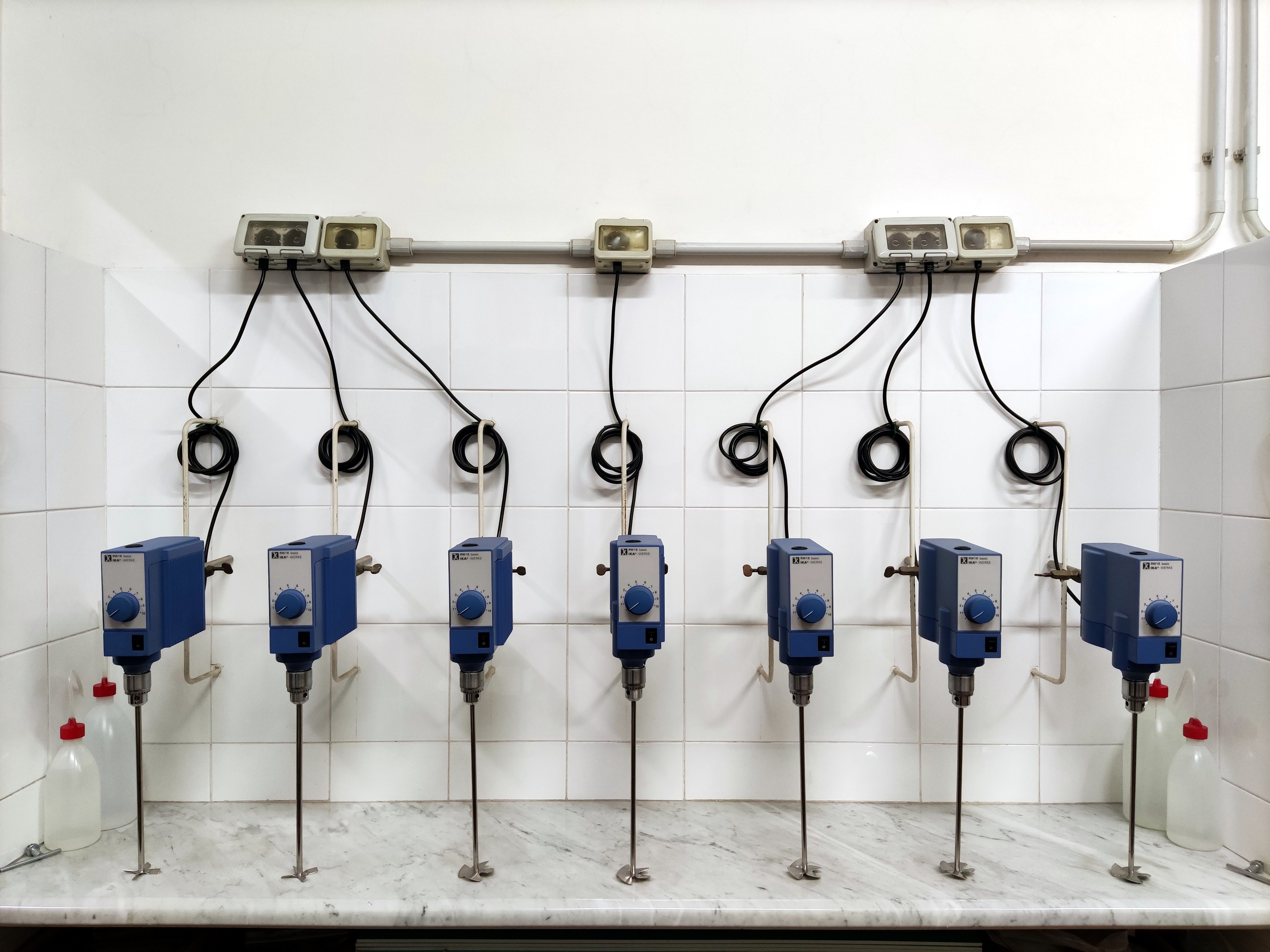 Stirrers: battery of immersion stirrers. |
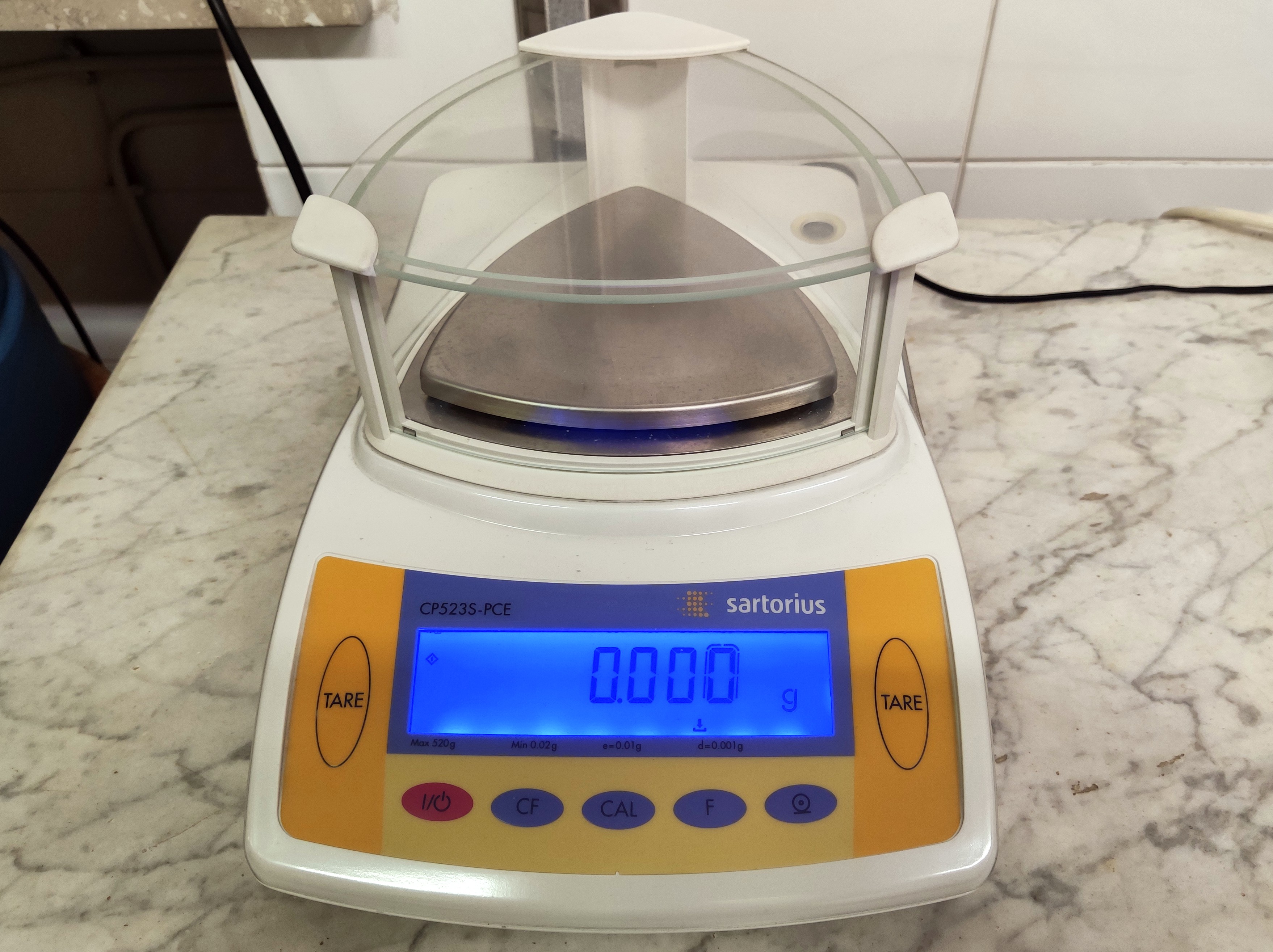 Balance: Sartorius precision balance. |
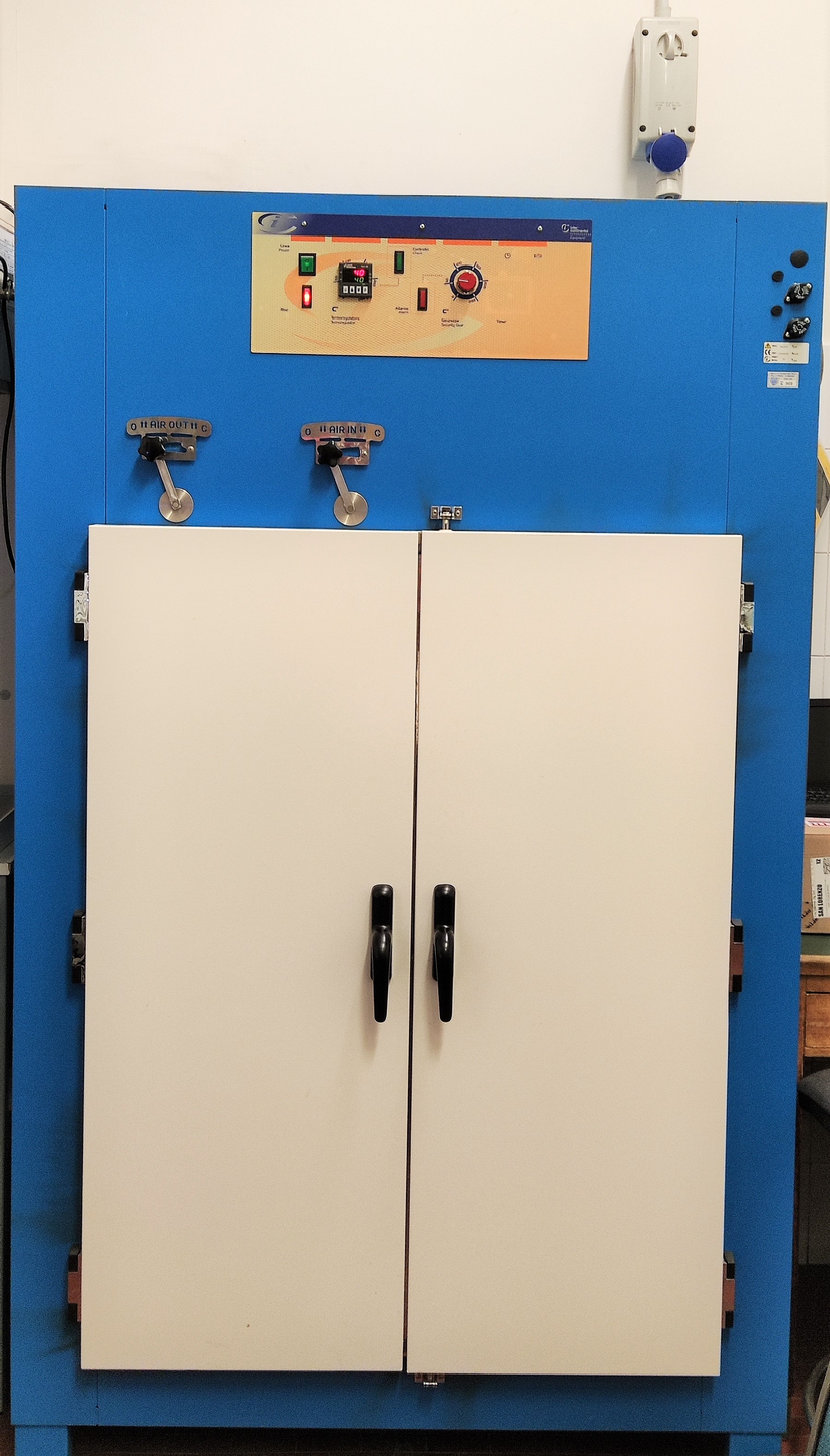 Oven: thermostated (40 °C) ventilated air oven. |

